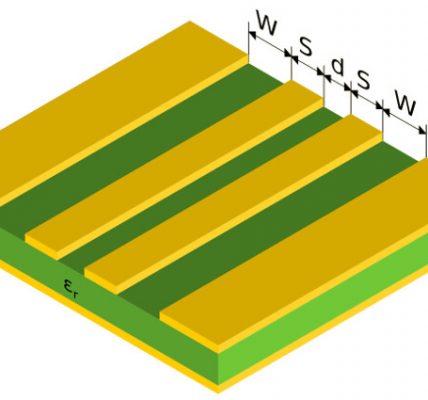Corrosion Resistance of Hard Gold on PCBs
Hard gold has a more refined grain structure than soft gold and is ideal for visually appealing gold contacts on PCBs. It typically plated over a nickel underplate, which helps to improve its durability.
Hard gold offers longer lifecycles based on the thickness of the deposit and can withstand high actuation forces. This makes it a preferable choice for projects that require regular sliding wear or make/break switching events.
Corrosion Resistance
Corrosion resistance is a vital aspect of any gold finishing process. Different metals corrode at different rates and in different ways, depending on the elements they are exposed to. Gold’s corrosion-resistant properties are more effective when there are no openings or cracks in the coating, which could allow contaminants to reach the base metal. These openings and cracks can be created by scratches or by chemical attack on the coating.
Hard gold plating is a type of alloy gold that uses other non-noble metals, such as cobalt or nickel, to increase its hardness and luster. The inclusion of these other metals changes the grain structure, which allows for a much finer and more lustrous deposit than pure gold deposits. Additionally, these metals inhibit crystal growth and cause hard gold the gold to harden to a more stable state. This helps to prevent sliding wear and makes the hard gold deposit more resistant to on/off switching events.
The downside of the inclusion of these other metals in hard gold is that it negatively affects solderability. The cobalt and nickel used to harden gold will oxidize at soldering temperatures and reduce the strength of the solder joint. This is why soft gold plating (or ENIG) is a better choice for applications where solderability and wire bonding are crucial. The softer nature of soft gold also means it can be plated much thinner than hard gold, which can help with cost and design limitations.
Wear Resistance
Gold resists abrasion and wear better than other metals, such as copper or nickel. This is due to the lack of oxide and compound formation on the surface. As such, hard gold offers excellent wear resistance in applications like edge connector fingers and keypads that are exposed to repeated sliding or make/break switching events.
A significant correlation has been found between the rate of wear and the lifetime of gold platings in both fretting corrosion and wear tests. Interestingly, the results indicate that both the material and the thickness of the gold plate are important factors in determining the lifetime of platings.
The ability of gold to resist corrosion is improved through the use of additives in the coating. Often these additives include anti-oxidant, anti-corrosion and anti-abrasion agents. In addition, a thicker coating of gold will offer more wear protection than a thinner one.
A nickel underplate serves to support the contact load of a hard gold deposit, which can help reduce cracking of the deposits and overall improve their wear properties. However, it is not recommended Hard Gold PCB Supplier for soldering applications because it may oxidize at elevated temperatures and contaminate the underlying gold deposits. For a more flexible application, consider using soft gold, such as ENIG. This is a more versatile material, but is not suitable for soldering.
Electrical Conductivity
Gold itself is too soft to withstand everyday wear, but when a small percentage of hardening metals are added, it becomes a harder deposit known as “hard gold.” In addition to increasing its durability, the use of these alloying materials also reduces the plating’s coefficient of friction. This makes hard gold suitable for applications that experience repeated sliding contact such as connector pins and shells.
Corrosion resistance is another benefit of hard gold. Humid environments and corrosive pollutants can attack other metals like nickel or copper, causing them to break down and interfere with electrical contacts. However, gold is much less susceptible to these conditions and will protect components from corrosion better than other metals.
The hard electrolytic gold plating used on edge connector fingers and keypads on PCBs is usually applied over a barrier layer of nickel, which minimizes the risk of pore corrosion. The nickel also acts as a diffusion barrier to prevent the penetration of other metals such as copper into the thin areas of the gold surface, which would otherwise cause creep and oxidation. The plated hard gold has a smaller, more refined grain structure than soft gold. This results in a finish that is brighter overall. The resulting higher level of gloss also means that hard gold is more resilient to scratches and inconsistencies from burnishing.
Solderability
While hard gold plating offers great corrosion resistance and durability it has a lower solderability than soft gold. The reason for this is that the harder the gold deposit the more impurities it contains and these elements oxidize at soldering temperatures. This can lead to poor solderability and brittle joints. Soft gold, on the other hand, has fewer metal impurities which helps to improve solderability and wire bonding.
In addition, hard gold plating is not suitable for applications where there are high temperatures and long-term storage. This is because the copper underneath the hard gold layer can oxidize and short circuit if exposed to prolonged exposure to these conditions. Soft gold, on the other hand, is a good choice for these applications since it has better oxidation resistance and can be used with lubricants to improve solderability.
Full body hard gold plating is a rare PCB surface finish and is usually reserved for specialized applications. Selective hard gold plating is a more common technique that involves using the same electrolytic or immersion process but only covering specific areas of the circuit board with the finish.
When selecting the right PCB surface treatment for your project it is important to consider all of these factors to ensure that your product meets its intended purpose. For more information on the different types of PCB surface treatments available please contact us today.
